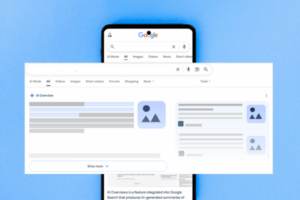TikTok Rolls Out Small Business Resource Center

As TikTok marches toward the monetization of its platform, it is releasing a new portal for small businesses. From creative tools to measurement solutions, TikTok wants advertisers to begin learning how they can position their brand on the up-and-coming platform.
The Resource Center houses various helpful tools, but positions its earliest success stories at the top, giving businesses a better idea of how other SMBs are already using the channel to grow. As momentum on TikTok builds, we expect this hub to be a regular stomping ground for digital marketers.
Instagram Explores Affiliate Solutions for Creators
Instagram has long been heralded for its consistent development of new tools and features for users and brands alike. However, influencers (called creators by Instagram) have become a bourgeoning base for the platform in recent years and it’s looking for more ways to support them.
In addition to Branded Content Ads and Product Tagging, recently leaked screenshots from a developer spotlight that Instagram is designing another tool for creators to earn commission through affiliate content. While this feature is in its early stages of development, it is an exciting possibility and shows Instagram’s continued focus on generating value for these creators as rival apps like TikTok try to win them over.
Instagram Lures Luxury Brands in with Guides

Over time, we’ve seen more and more people opt to digest news and information on their phones, tablets, or desktop vs. traditional print media. This trend has forced many brands to consider how they can reposition themselves in advertising and the publishing of content.
One recently released outlet is Instagram Guides, which allows businesses to post longer-form content beyond a single photo or video. Guides can also include commentary or tips alongside media or create galleries. This feature has been specifically adopted by many luxury goods brands like Gucci, Burberry, and Prada to see if their following responds to this form of content on the platform.
This is yet another tactic that Instagram has made to compete with Pinterest, which is testing a similar feature. We will see how this storytelling placement resonates with users, but it could be a valuable 1st party data source for the platform as privacy restrictions are continuing to limit Instagram and Facebook’s tracking capabilities.
A Path to Privacy in Virginia
If you’ve been following news about privacy in digital advertising, there’s no doubt that you’ve seen headlines about CCPA (California Consumer Privacy Act) and Facebook’s response, Limited Data Use.
In short, these two items were created to answer growing concerns with individual users’ privacy in online advertising. In February, Virginia Governor Ralph Northam joined the cause by signing the Consumer Data Protection Act into law. This policy will go into effect on January 1st, 2023 and will place similar restrictions as CCPA on how businesses handle personal data for Virginia’s consumers.
The new law will require users’ permission in order to utilize their data, giving Virginians the option to refuse that their information is used. The legislature will also enforce businesses to conduct data protection assessments to minimize harm to consumers and increase clarity in their privacy notices and disclosures. As we inch closer and closer to a cookie-less digital space, we can expect to see more similar policies enacted that further regulate how advertisers can target and track consumers.
Social Advertising for Gen Z and Millennial Audiences
Consumers are staying at home and spending more time and money shopping online – not just online, but specifically on social media platforms.
Overall, the global social commerce market was estimated at $89.4B in 2020 and is projected to grow to $604.5B by 2027. There will be an estimated 90.4M social media purchasers in 2021, up 13% from 2020.
As social commerce continues to grow, it’s particularly important to know how Millennials and Gen Z use social media in their buying habits. A recent study conducted by The Influencer Marketing Factory found that 60% of respondents made a purchase on their smartphone because of social media posts from brands or influencers.
Furthermore, 46% of respondents made a purchase at least once per month based on social media content. The majority of those purchases are dedicated to apparel products (41%) while beauty products make up 23%. Additionally, 61% of responders said that they prefer a direct add-to-cart process native to the app they are using as opposed to buying on a third-party site.
Among the Gen Zs and Millennials tested, online product reviews were rated highly important in the purchase decision. Lastly, Instagram one was was rated a 5.3 compared to TikTok’s 4.1 in terms of the buying experience.
We hope you enjoyed the March 2021 Social Media Water Cooler! To view past editions, click here.






